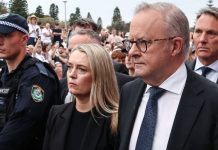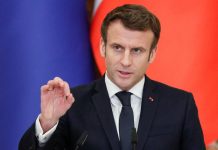DM Monitoring
MOSCOW: Russia all set to annex four regions as referendums were held from September 23-27, 2022 in the Donetsk and Lugansk people’s republics, as well as in the liberated territories of the Zaporozhye and Kherson regions, on the issue of joining Russia. During the plebiscites, an overwhelming majority of the residents spoke in favor of joining Russia. In all four regions, the voting was declared valid in all four regions.
On February 21, 2022, Russia recognized the independence of the Donetsk and Lugansk people’s republics (DPR and LPR). A few days later, on February 24, Russian President Vladimir Putin launched a special military operation in Ukraine. The decision was made in response to a request for help from the people’s republics of Donbass, where about 14,000 men, women and children had already lost their lives in the Kiev regime-unleashed hostilities.
The DPR and LPR have repeatedly declared their readiness to join Russia as constituent territories. In 2022, the authorities of the liberated territories of the Kherson and Zaporozhye regions followed suit.
On September 20, 2022, the Donetsk and Lugansk people’s republics, and the Zaporozhye and Kherson regions announced their decision to hold referendums on joining Russia as constituent territories. The referendums were held over a period of five days, from September 23 to September 27.
For security reasons, in-person voting at the polling stations was held only on the last day, September 27 while on all other days election commissions’ staffers walked about their precincts with portable transparent ballot boxes from house to house or set up temporary outdoor voting outlets in the neighborhoods.
According to Russia’s Central Election Commission, more than 100 foreign observers from 40 countries, including Brazil, Venezuela, Germany, Egypt, Serbia, Syria, Slovakia and Uruguay, had arrived to keep an eye on the voting process. Four members of Russia’s Central Election Commission and more than 100 officials delegated by Russia’s regional election commissions worked at the polling stations, too. Members of all political parties represented in the State Duma received invitations to participate in the monitoring campaign.
On September 19, 2022, the Civic Chamber of the Donetsk People’s Republic asked the head of the republic, Denis Pushilin, and the People’s Council (legislature) to urgently hold a referendum on the issue of the republic’s accession to Russia.
On the next day, September 20, 2022, Pushilin, signed a law on holding the requested referendum.
In the DPR, 450 polling stations were opened. Another 200 were created for evacuees in Russia. More than 1.5 million ballot papers were printed, in accordance with the number of those eligible to vote. The ballot papers were printed only in Russian, which has the status of the official language in the DPR.
The question put to the vote was: “Are you for the Donetsk People’s Republic’s accession to Russia as a constituent territory?”
According to the DPR’s CEC, after the processing 100% of the election commissions’ reports, in the DPR the idea of joining Russia was supported by 99.23% of those who voted in the referendum. The turnout was 97.51% (2,131,207).
On June 17, 2022, the Central Election Commission of the Lugansk People’s Republic approved the procedure for establishing constituencies and polling stations for the referendum on the republic’s accession to Russia. On July 15, the LPR’s Civic Chamber initiated the creation of the referendum’s headquarters. On July 22, the Civic Chamber’s chairman, Aleksey Karyakin, announced that the Chamber had begun to draw up lists of observers.
On September 19, 2022, the Civic Chamber asked the head of the republic, Leonid Pasechnik, to immediately hold a referendum on the LPR’s accession to Russia. The Civic Chamber said this step would make the republic’s territory secure and open up new opportunities for its reconstruction.
On September 20, 2022, Pasechnik, signed a law on holding the requested referendum. On September 21, the LPR’s Central Election Commission approved the referendum-related procedures.
LPR residents voted at 461 polling stations in the republic, as well as in almost all regions of Russia, where 201 polling stations were created. Ballot papers were printed only in Russian, which, like in the DPR, has the status of the official language. As of September 23, 1,360,768 voters were included in the voter lists.
The question put to the vote was: “Are you in favor of the Lugansk People’s Republic’s accession to Russia as a constituent territory?”
According to the LPR’s CEC, after the processing 100% of the election commissions’ reports, in the LPR 98.42% of those who took part in the referendum voted for joining Russia. The turnout was 94.15% (1,662,607).
As a result of Russia’s special military operation, most of the Zaporozhye Region’s territory is under the control of the Russian army. On this territory, a military-civilian administration was created under Yevgeny Balitsky. The temporary center of the liberated territory is Melitopol, the largest city in the Zaporozhye Region’s area under the military-civilian administration’s control.
On June 8, 2022, Balitsky said the authorities of the liberated territories were planning to hold a referendum on joining Russia. On July 23, he signed a decree to establish an election commission for the referendum.
On September 20, 2022, the public movement We are together with Russia asked the head of the Zaporozhye military-civilian administration to hold a referendum on the region’s accession to Russia. On the same day, Balitsky signed an order to hold the requested referendum on September 23-27.
According to the leader of the movement We are together with Russia, Vladimir Rogov, the referendum was organized on 73% of the liberated territory of the Zaporozhye Region: 394 polling stations were formed in the region proper, and another 85 elsewhere – in Russia, the LPR, the DPR and the Kherson Region. More than 500,000 people were put on the voter lists. The ballot papers were in two languages – Ukrainian and Russian.
The question put to the vote was: “Are you in favor of the Zaporozhye Region’s secession from Ukraine, formation of an independent state and its accession to Russia as a constituent territory?”
According to the regional election commission, after the processing 100% of the election commissions’ reports, 93.11% (430,268) of the referendum participants in the liberated territory of the Zaporozhye Region voted for joining Russia. The turnout was 85.4% (541,093).
As a result of the special military operation, most of the Kherson Region’s territory is controlled by Russian troops. A military-civilian administration under Vladimir Saldo was formed.
On June 29, 2022, the deputy head of the Kherson Region’s military-civilian administration, Kirill Stremousov, announced that the region’s authorities had begun preparations for a referendum, which would provide an answer to the question if the local population wished to join Russia. On July 22, the head of the military-civilian administration signed a decree to establish an election commission.
On September 20, 2022, the Public Council of the Kherson Region asked Saldo to immediately hold a referendum on the region’s accession to Russia. On the same day, Saldo signed a decree on holding a referendum on September 23-27 on the issue of joining Russia as a constituent territory.
According to the Kherson Region’s election commission, about 750,000 voters were able to take part in the referendum at any of the 198 polling stations in the region. Those residents of the Kherson Region who had temporarily left it could vote in Crimea, Moscow or some other Russian cities. The ballot papers were printed in two languages: Ukrainian and Russian.
The question put to the vote was: “Are you in favor of the Kherson Region’s secession from Ukraine, creation of an independent state and its accession to Russia as a constituent territory?”
According to the regional election commission, after the processing 100% of the election commissions’ reports, in the Kherson Region 87.05% of those who took part in the referendum (497,051) were in favor of joining Russia. The turnout was 78.86% (571,001).




